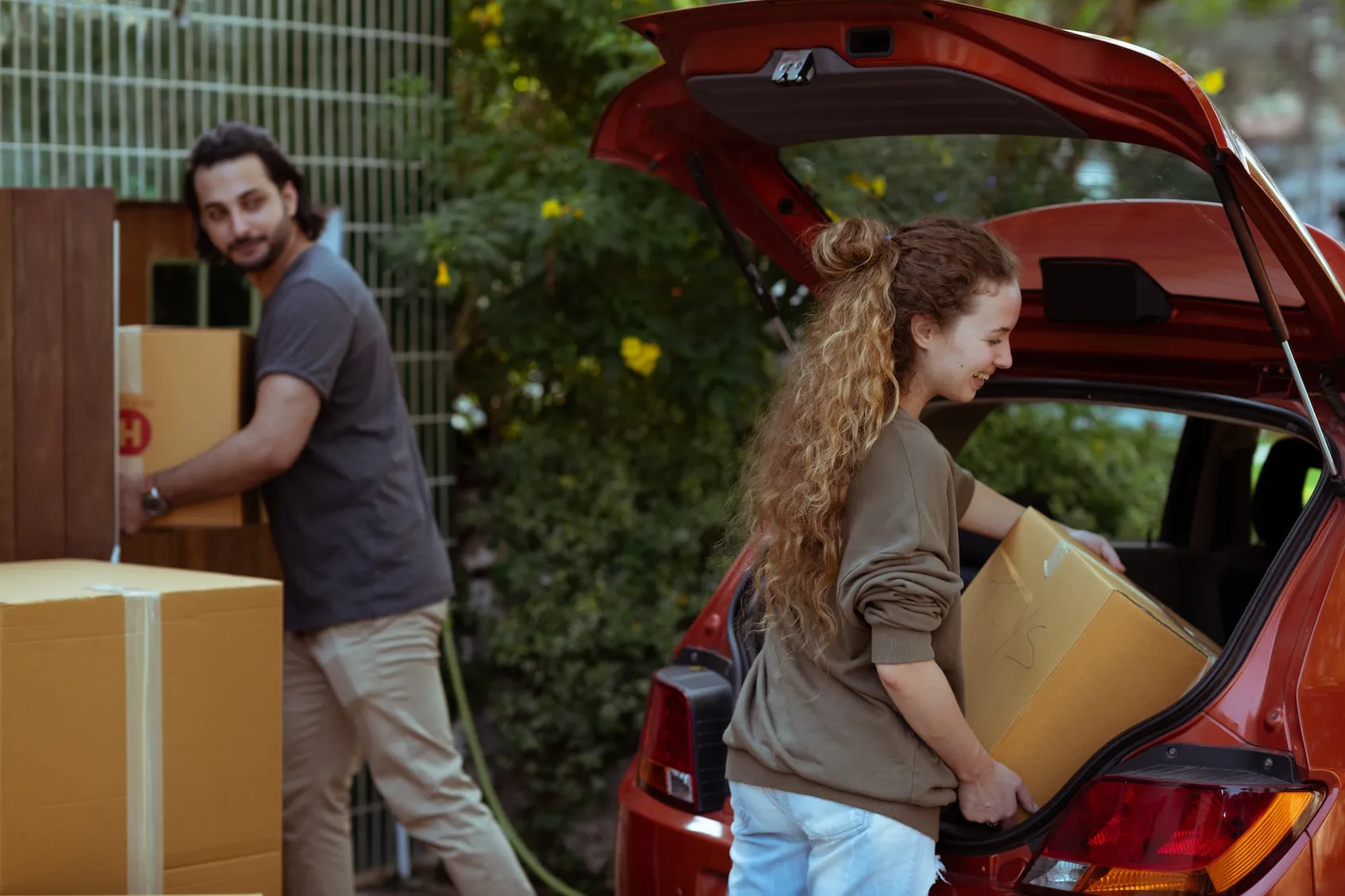Kitchen knives are a valuable and necessary tool for cooking, but they can also be dangerous if left out and unsecured. It is important to take precautions when storing kitchen knives to ensure the safety of those in the household.
This article will discuss how to lock up kitchen knives and the various ways to do it securely.
How To Lock Up Kitchen Knives?
When it comes to kitchen safety, one of the most important tips is to lock up kitchen knives securely. Kitchen knives are some of the sharpest and most dangerous tools in the home, making it essential to ensure they are stored securely. Here are some tips to help you lock up your kitchen knives safely and securely:
Invest in a knife block. Knife blocks are a great way to store your kitchen knives safely and securely. Knife blocks are designed to keep the knives in place and prevent any accidental cuts. Additionally, most knife blocks come with a locking mechanism that can be used to keep the knives secure.
Use a magnetic knife holder. Magnetic knife holders are a great way to store kitchen knives securely. They attach to the wall or other surfaces and are designed to hold the knives in place. Additionally, most magnetic knife holders come with a locking mechanism that can be used to keep the knives secure.
Utilize locking drawers or cabinets. Many kitchen cabinets and drawers come with locks that can be used to keep the knives secure. This is an ideal way to lock up kitchen knives, as it ensures they are out of reach for children and other unauthorized individuals.
Keep kitchen knives in a secure location. If you don’t have any other options mentioned above, you can always keep your kitchen knives in a secure location. This could be a locked cupboard, a locked drawer, or any other secure location. This will ensure that the knives are out of reach of children and other unauthorized individuals.
By following these tips, you can ensure that your kitchen knives are safely and securely locked up. This will help prevent any accidental cuts or injuries, making it easier for you to enjoy a safe and secure kitchen environment.

Knife Storage Options
There are many different storage options for kitchen knives, depending on your preferences and space limitations. Here are a few popular options:
- A knife block: This is a classic option for knife storage, typically made of wood or bamboo. Knife blocks can hold various knives and are easy to access while cooking.
- Magnetic knife strips: These can be mounted on a wall or the underside of a cabinet and hold knives in place with magnetic force. This option is great for saving counter space and keeping knives easily accessible.
- Drawer inserts: Drawer inserts are a great option for those who prefer to keep their knives out of sight. These are often made of wood and provide secure storage for a set of knives within a kitchen drawer.
- In-drawer knife blocks: Similar to a traditional knife block, these are designed to fit within a drawer and securely hold your knives. This option is ideal if you want to keep your knives close at hand but don’t have the counter space for a traditional knife block.
Safely Storing Kitchen Knives
Storing kitchen knives safely is important to avoid accidents and prolong the lifespan of your knives. Here are a few tips on how to store them properly:
- Use a knife block. A knife block allows you to store your knives safely and in an organized manner. Ensure that the slots in the block are wide enough to accommodate your knives and fit securely in each slot.
- Use a magnetic holder. Magnetic holders allow you to store your knives vertically on the wall, saving valuable counter space and keeping them out of reach of children.
- Keep them in a drawer. If you prefer to store your knives in a drawer, use a knife tray or insert to keep them organized and prevent the blades from rubbing against each other. Ensure that the knives are fully inserted into the tray and that the drawer is not overcrowded.
- Cover the blades. If you’re storing your knives in a container or traveling with them, cover the blades with blade guards or sheaths to prevent them from damaging or causing injury. Remember to always handle knives with care and respect and keep them out of reach of children.
Benefits Of Securing Kitchen Knives
Securing kitchen knives is important for several reasons. Here are some benefits:
- Safety: Securing knives keeps them out of reach of children and pets, preventing accidental injuries. It also lowers the risk of injury for adults who accidentally bump into a sharp blade.
- Organization: Keeping knives in a secure location helps overall kitchen organization. It can save time when preparing meals and prevent clutter from piling up.
- Protection: When knives are secured properly, they are less likely to become damaged or dull, saving time and money in the long run.
- Durability: Securing knives in covers or drawers can increase lifespan by protecting them from moisture and other damaging elements.
Types Of Knife Storage Solutions
Regarding kitchen safety, it is important to lock up kitchen knives safely and securely. Several knife storage solutions can be used to keep knives safely stored away.
The most common option is a knife block, typically made of wood and designed to hold several knives in a safe and organized way. Knife blocks are often mounted on the wall or placed on the countertop, making them easily accessible while still securely storing the knives.
Additionally, there are knife drawers available that can be installed in the kitchen. These drawers are designed with a lock and key system, ensuring children and pets cannot access the knives.
Knife guards are also a great option, as they are designed to fit over the blade of a knife and help keep it safe when it is not in use.
Furthermore, magnetic knife strips can easily be mounted to the wall, allowing for easy storage and access to knives.
Finally, knife bags are a convenient and safe way to store and transport knives when not in use.

Choosing The Right Knife Storage
When choosing the right kitchen knife storage, it’s important to consider your specific needs and preferences and the space available in your kitchen. Here are a few things to keep in mind:
- Capacity: Before choosing a knife storage solution, consider how many knives you have and how much storage space you need. If you have a large collection of knives, you may need a larger storage option, such as a knife block or magnetic knife strip.
- Safety: Consider the safety features of different knife storage options. For example, a knife block may be more secure than a magnetic knife strip, potentially allowing knives to fall off if not properly secured.
- Material: Choose a storage option made from durable materials that can withstand regular use. For example, a wooden knife block may be more prone to wear and tear than a plastic or metal one.
- Accessibility: Make sure your knives are easily accessible when you need them. For example, a magnetic knife strip may be a good option to keep your knives within reach while cooking.
- Aesthetics: Consider your kitchen’s overall look and feel when choosing a knife storage option. You may choose a storage solution that matches your kitchen decor or adds a decorative touch to your space.
Safely Storing Kitchen Knives
Kitchen knives are essential for any home cook but can also be hazardous if not stored correctly. Securing and locking kitchen knives properly is important to ensure your family’s safety. Here are some tips for safely storing kitchen knives:
The first step is to purchase a knife block or storage rack. This will keep the blades of your knives away from unsuspecting hands and make them easier to find when you’re ready to use them. You can purchase a lockable knife block or storage rack for added security. This will provide additional peace of mind by preventing children or anyone else from accessing the knives.
Another option is to store your knives in a locked drawer. This will provide the same security as the locked knife block, but you can also organize the knives in a convenient way. Be sure to keep the drawer locked and out of the reach of the children.
You can also choose to hang your kitchen knives on a wall rack. This is a great option to keep the knives off the countertop and out of the way. Be sure to use a wall rack securely mounted to the wall and place it in an area that is out of reach of children.
Finally, you can invest in a magnetic knife holder. This is a great option for keeping your knives safe and secure, as it keeps the blades of the knives away from unsuspecting hands. Be sure to securely mount the holder to a wall or cabinet, and ensure it is out of reach of children.
Knife Storage Regulations
Kitchen knife storage regulations may vary by region or country, but generally, it is important to store knives in a way that minimizes the risk of injury. Here are some basic guidelines to follow:
- Keep knives out of reach of children and pets. Store knives in a high cabinet, or use a knife block or magnetic strip mounted out of reach.
- Store knives safely to prevent injury. Use a knife block, a sheath, or a cover to prevent accidental cuts or punctures.
- Keep knives sharp. Dull knives require more force to cut, which increases the risk of injury. Regularly sharpen knives or professionally sharpen them to ensure they are always in good condition.
- Label knives that are for specific uses. This is especially important in a commercial kitchen or food service setting where multiple people may handle knives. Labeling knives can help prevent cross-contamination and promote food safety.
Using A Knife Block For Secure Storage
Using a knife block is a great way to keep your knives secure and organized. Here are some tips to make sure you’re using your knife block correctly:
- Make sure your knife block is stable and secure. A wobbly knife block can be a safety hazard, so ensure your block is on a level surface and not likely to tip over.
- Store your knives with the blades facing down. This will help protect the blades and prevent them from becoming dull.
- Clean your knife block regularly. Dust and debris can accumulate in the slots of your knife block, so it’s important to clean it out regularly.
- Make sure your knives are dry before storing them in the block. Moisture can lead to rust and corrosion, so ensure your knives are completely dry before being put away.

Kitchen Knife Lock Boxes
It is important to secure kitchen knives for safety properly. One way to do this is to use kitchen knife lock boxes. These boxes are designed to keep knives safe and secure and can be used in the kitchen or a storage closet.
Kitchen knife lock boxes are made from heavy-duty materials, such as steel or aluminum, that resist breaking and tampering. They come in various sizes to accommodate various sizes and shapes of knives. Most boxes also have a locking mechanism that requires a key to open. This ensures that only authorized personnel can access the knives.
The boxes also feature a foam insert that helps protect the knives from scratches, dents, and other damage. The box’s interior is lined with a material that prevents the blades from cutting through the box. This helps to keep the knives safe and secure while they are stored.
The boxes come in various colors and styles to fit the kitchen decor. Some boxes also feature a handle so that they can be easily carried around. This makes moving the knives from one area to another easy if they need to be stored in a different location.
When storing knives in a kitchen knife lock box, it is important to store them away from children. This will help to prevent accidental injuries from knives that are not properly secured. It is also important to clean the knives before storing them in the box to prevent rust and damage to the blades.
Magnetic Knife Strips For Secure Storage
A magnetic knife strip is one of the best ways to store kitchen knives. Magnetic knife strips are ideal for safely storing kitchen knives, as they keep them organized and secure.
Magnetic knife strips are typically made of wood, plastic, or metal, and they feature a strip of magnets along the length of the strip. The magnets on the strip are strong enough to hold the knives securely in place but not so powerful that they cause damage to the knives.
The first step in using a magnetic knife strip is to measure the wall space that you would like to use for the strip. You want to ensure the strip is wide enough to fit your knives and securely attached to the wall.
Once you have determined the strip size, you can choose the material you would like to use. As mentioned earlier, magnetic knife strips are available in wood, plastic, and metal, so you can choose the material that best suits your needs.
Once you have chosen a material, you can attach the magnetic knife strip to the wall. Depending on the type of material you choose, you may need to use screws or nails to secure the strip to the wall. If you choose a metal strip, you may need a drill to make holes in the wall for the screws. It’s important to ensure the strip is securely attached to the wall to ensure the knives stay in place.
Once the magnetic knife strip has been attached to the wall, you can start placing your knives onto the strip. It’s important to note that the blades of the knives should always be facing away from you. This will keep you safe from any accidental cuts or injuries.
When placing the knives onto the strip, it’s important to ensure they are securely attached. To ensure that the knives stay in place, you can use a rubber band or a piece of tape to keep the knives securely attached to the magnetic strip.
Vault Secure Case
Having kitchen knives around your home can be a safety hazard, especially if you have children. A vault-secure case is a great option to help keep your knives safely locked away.
A secure vault case is a secure storage container made from metal or plastic. It can be locked with a key or a combination, depending on your chosen model. The case is designed to provide secure storage for kitchen knives of any shape or size. Inside the case, the knives are kept out of sight and out of reach, making it difficult for children or other unauthorized individuals to access them.
The case also helps protect the knives from accidental damage or misuse. The knives are kept in individual slots or compartments in the case, which helps ensure that the blades remain sharp and in good condition. The case is also designed to be durable, so it can withstand regular use and keep the knives safe.
In addition to providing secure storage, a secure vault case can help reduce clutter in your kitchen. Many cases have a slim and compact design, making them easy to store in a cabinet or drawer. This helps reduce the amount of clutter often associated with having multiple kitchen knives in the kitchen.
Knife Safety And Precautions
Knife safety is an important factor to consider when keeping your kitchen knives secure. A knife safe is one of the most effective ways to ensure kitchen knives are kept out of reach of children, pets, and others.
It is essentially a box or container designed to store knives securely. They come in various sizes and materials, such as plastic, steel, and wood. The best knife safes feature a combination or keypad lock, which allows you to keep the knives away from unauthorized access.
When selecting a knife safely, it is important to consider the type of knives you plan to store. If you have a large collection of kitchen knives, then a larger, heavier-duty safe would be best. However, a smaller, lighter safe will work fine if you only have a few knives.
Additionally, you may want to consider the type of locking mechanism the safe has. Combination locks are generally the most secure, as they cannot be picked or opened without the correct combination.
It is also important to consider where you will place the knife safely. Ideally, it should be placed in a secure area, such as a pantry or closet, away from any areas where children or pets can easily access it.
Furthermore, you may consider placing the safe somewhere out of the way, such as the back of a cupboard or under the kitchen sink. This will help ensure the knives are not easily accessible in an emergency.
Once you have selected the right knife safe for your needs, ensuring it is properly installed is important. Ensure that the locking mechanism is secure and that the safe is fixed to the wall, cabinet, or other surface to prevent it from being easily moved.
Conclusion
In conclusion, it is important to securely lock up kitchen knives to ensure the safety of all parties involved. This can be done using knife blocks, knife drawers, and knife cases. With the correct security measures, kitchen knives can be kept safely away from children and other individuals who may not be aware of the danger they can pose.
Frequently Asked Questions:
How do you childproof kitchen knives?
One way to childproof kitchen knives is to store them in a locked drawer or cabinet. This will make them inaccessible to children. Alternatively, you can buy knife guards that fit over the blades of kitchen knives to make them less accessible. You can also invest in a knife block to hold the knives in place and make them harder to access.
What is the best way to store knives in a kitchen?
The best way to store knives in a kitchen is in a knife block or a drawer with a knife organizer. Knife blocks provide an easy-access storage solution and help protect the blades from damage. A knife organizer will help keep the knives organized and accessible in a drawer while also protecting the blades from damage.
How do chefs keep their knives?
Chefs typically keep their knives in knife blocks, magnetic knife strips, or rolls. Storing knives properly is important for the blade’s longevity and for the chef’s safety.
How do you make a knife storage block?
To make a knife storage block, select a type of wood, cut it into rectangular pieces with grooves for the knives, sand it down, apply a finish, stack the pieces together with wood glue, and let it dry before using it to store kitchen knives.
What is the best way to store kitchen knives?
The best way to store kitchen knives is to use a knife block or a magnetic knife strip. Knife blocks are a great way to keep knives within easy reach while protecting the blades from damage. Magnetic knife strips are also a great way to store knives, as they keep the blades away from other objects and allow easy access.
How do I ensure my kitchen knives stay sharp?
To ensure your kitchen knives stay sharp, you should regularly sharpen them using a honing steel, sharpening stone, or an electric knife sharpener. Additionally, you should always hand-wash and dry your knives after use and store them safely away from other kitchen utensils.
Are there any safety considerations when using kitchen knives?
Yes, there are safety considerations when using kitchen knives. Always use caution when handling knives and avoid running with them. Make sure to keep knives sharp and stored properly. When using a knife, keep the blade facing away from you and the handle close to the body to maintain control. Also, be sure to keep knives away from children.
What materials are best for kitchen knives?
The best materials for kitchen knives are high-carbon stainless steel, ceramic, and high-carbon, non-stainless steel. High-carbon stainless steel is the most popular and widely used for kitchen knives because it is durable, resists corrosion, and maintains a sharp edge. Ceramic blades are extremely hard and hold an edge for a long time, but they can be brittle and difficult to sharpen. High-carbon, non-stainless steel is known for its hardness and ability to keep a sharp edge, but it is susceptible to rust and staining.
